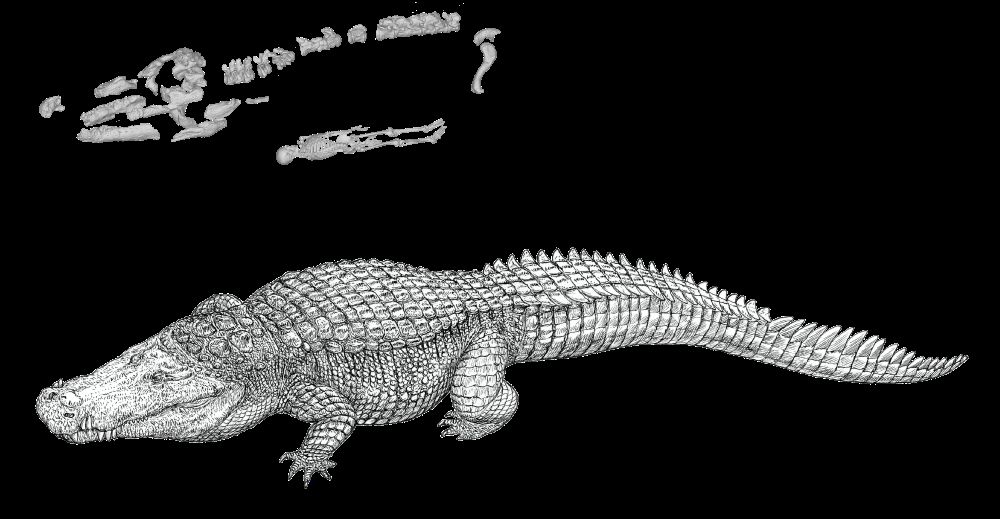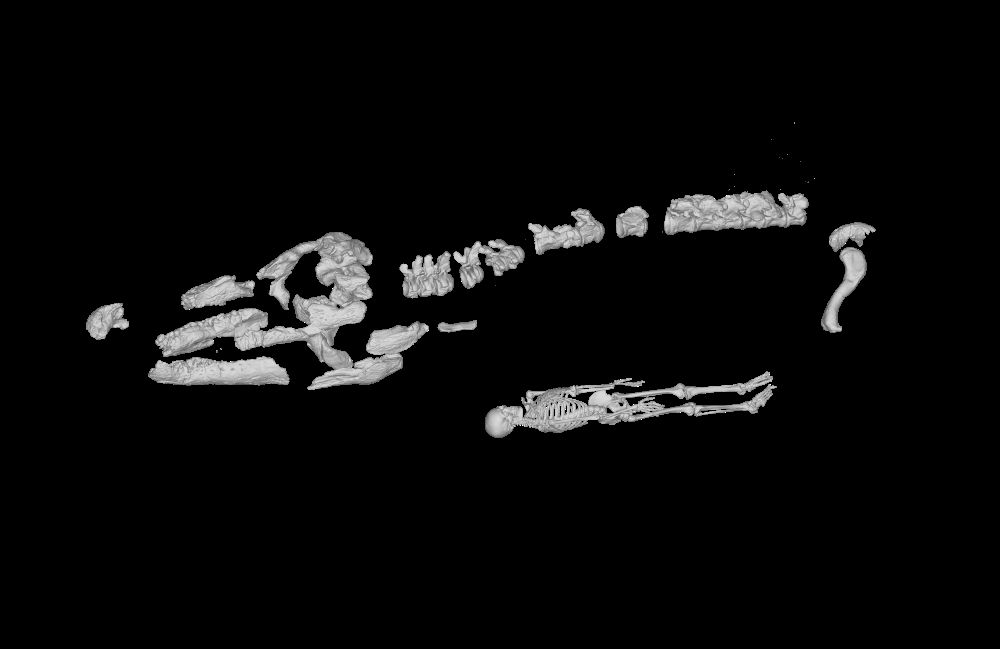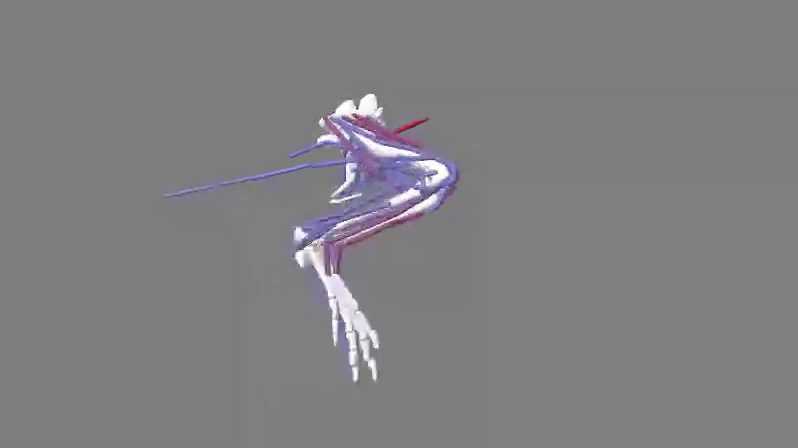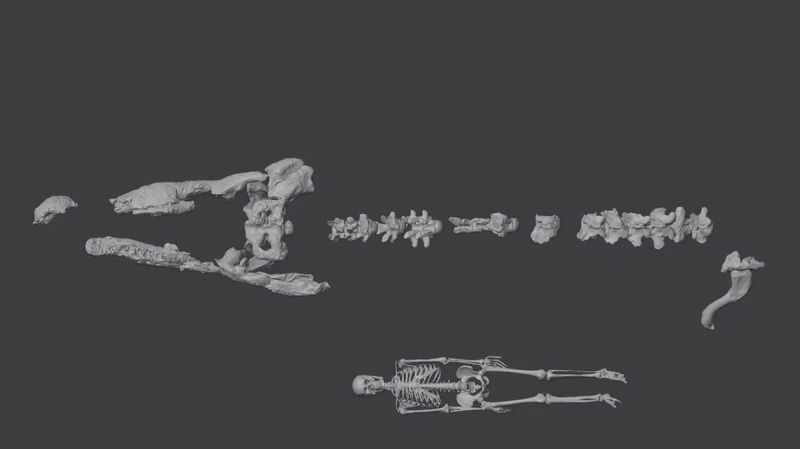How changing limb posture helped ancient reptiles grow
New collaborative research from the Royal Veterinary College (RVC), along with the Institute of Vertebrate Paleontology and Paleoanthropology (Beijing, China) and Clemson University (South Carolina, USA), has revealed how more upright limb postures helped ancient reptiles overcome the biomechanical constraints of body size, paving the way for the evolution of larger sizes in archosaurs – a group that includes crocodylians, dinosaurs and birds.

The study, which has been published in Science Advances was conducted using computational modelling and simulation of hindlimb movements, muscle usage and thigh bone stresses across hindlimb postures and body sizes in juvenile to adult American alligators – part of an ancient reptile lineage that has its origin in the earliest Triassic period, around 250 million years ago.
Analysing these simulation results, the research team, including Professor John Hutchinson, Professor of Evolutionary Biomechanics at the RVC and Fellow of the Royal Society, explored how changes in hindlimb posture affect muscle forces and bone stresses, and how alligators of different sizes generate the limb muscle forces and bone strength needed to support their weight.
The results show that as alligators become larger, their muscles and bones experience increasing mechanical stresses. However, when they adopt a more erect, upright posture with their legs positioned closer beneath the body, these stresses are reduced. It is this biomechanical relief that allowed some early reptiles to evolve to larger body sizes without overloading their limbs.

These findings were also tested using a scaled model of the extinct giant alligatoroid, Deinosuchus riograndensis, which lived alongside dinosaurs in the Late Cretaceous of Texas. This model allowed the research team to understand how Deinosuchus moved on land despite its enormous size – exceeding three tonnes, making it one of the largest crocodylians ever, and roughly three times heavier than even the largest saltwater crocodiles today.
By simulating limb biomechanics in both modern alligators and Deinosuchus, the study revealed that extremely large crocodylians may have lost the ability to fully lift themselves off the ground, relying instead on belly-dragging for land locomotion. This analysis suggests that once an animal with a crocodylian-like body shape exceeds the size of adult American alligators (several hundred kilograms) and approaches the size of Deinosuchus (three tonnes or more), the mechanical constraints of muscle force and bone strength become too great for walking.
Professor John Hutchinson, Professor of Evolutionary Biomechanics at the RVC, said:
“Extinct animals often had forms and sizes unlike those of living animals. Science can indirectly test how those forms and sizes might have produced locomotion, and how that locomotion compares with that of living relatives. We thereby can learn more about the fundamental principles of locomotion than we can by purely studying living animals.”
Dr Masaya Iijima, Associate Researcher at the Institute of Vertebrate Paleontology and Paleoanthropology in Beijing, China and lead author of the study, said:
“We have studied modern alligators for years, through both experiments and simulations to investigate the evolution of limb posture and its functional implications. To further explore the evolutionary link between limb posture and body size in four-limbed vertebrates, our next step is to analyse fossil evidence – including skeletons and footprints – to reveal their evolutionary patterns.”
Professor Richard Blob, Alumni Distinguished Professor at Clemson University, South Carolina, USA, said:
“Giant body size puts extreme demands on organisms, but it has still evolved multiple times in earth history. Understanding how organisms survive extremes is a powerful tool for understanding what factors place boundaries on biodiversity. Biomechanical analyses like ours can give insight into how organisms push those boundaries and help explain why we see the range of body designs that we do today.”


Notes to Editors
Reference
Iijima, M., Blob, R., Hutchinson, J.R. 2025. Biomechanical simulations of hindlimb function in Alligator provide insights into postural shifts and body size evolution. Science Advances, adx3811.
The full paper is available at: https://doi.org/10.1126/sciadv.adx3811.
For media enquiries, please contact:
- rvc@plmr.co.uk
- Press Line: 0800 368 9520
About the RVC
- The Royal Veterinary College (RVC) is the UK's largest and longest established independent veterinary school and is a Member Institution of the University of London.
- It is one of the few veterinary schools in the world that hold accreditations from the RCVS in the UK (with associated recognition from the AVBC for Australasia, the VCI for Ireland and the SAVC for South Africa), the EAEVE in the EU, and AVMA in the USA and Canada.
- The RVC is ranked as the top veterinary school in the world in the QS World University Rankings by subject, 2025.
- The RVC offers undergraduate and postgraduate programmes in veterinary medicine, veterinary nursing and biological sciences.
- The RVC is a research-led institution, with 88% of its research rated as internationally excellent or world class in the Research Excellence Framework 2021.
- The RVC provides animal owners and the veterinary profession with access to expert veterinary care and advice through its teaching hospitals and first opinion practices in London and Hertfordshire.
